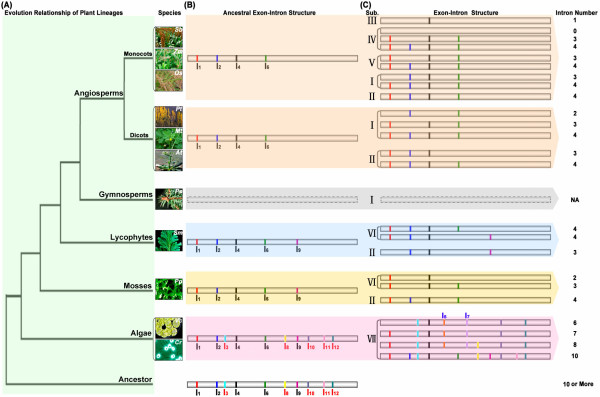Figure 4.
An evolution model for the structural evolution of the OPR paralogues in plants. (A) Evolutionary relationship of all plant lineages. (B) Proposed exon-intron structure of the ancestral OPR gene in each plant lineage. I1-I12 represent introns 1–12; I1, I2, I4, I6 and I9, labeled in black, are present in both aquatic and land plants; I3, I8, I10, I11 and I12, labeled in red, only exist in aquatic plants (green algae); I5 and I7, labeled in blue, most probably arose in aquatic plants (green algae). (C) Current exon-intron structure of OPR genes in all plant lineages. The exon-intron structure of OPR genes in the gymnosperm Picea sitchensis is represented with a dashed line, because the genome sequences of Picea sitchensis are unavailable and its gene structure is uncertain.

